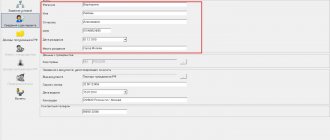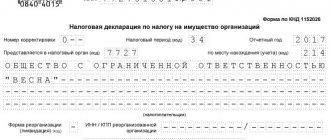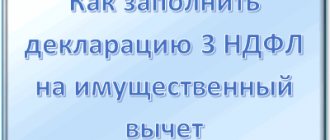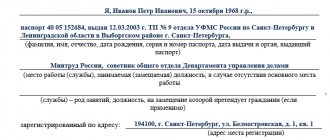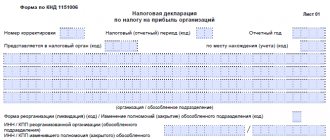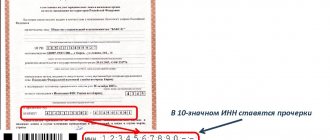Home • Blog • Blog for entrepreneurs • Zero reporting for individual entrepreneurs: how to submit
Zero reporting of an individual entrepreneur or, as it is also called, “zero” is a declaration that an individual entrepreneur submits to the Federal Tax Service in the absence of income for the tax period. Even though no profit was made, the business owner still needs to report to the regulatory authority. According to Federal Tax Service experts, lack of income does not exempt an entrepreneur from filing a tax return.
Individual entrepreneurs will have to submit zero reporting when using the following tax regimes: “simplified”, general system, unified agricultural tax. From January 1, 2021, UTII is no longer valid. For entrepreneurs with a patent, filing a tax return is not provided.
Zero reporting for individual entrepreneurs on the simplified tax system
The tax period under the simplified tax system is a calendar year. Upon completion, individual entrepreneurs submit a declaration to the Federal Tax Service office at their place of residence.
For individual entrepreneurs, there is a deadline of April 30 of the year that follows the previous tax period (for which, in fact, the tax return is filed). If a businessman ceases business activities, he should submit reports before the 25th day of the month following the month of filing the relevant notification to the Federal Tax Service.
The zero reporting of an individual entrepreneur on the simplified tax system should not be confused with a declaration in which there is profit, but the tax base is negative or equal to zero. This situation may arise when using the taxation object “Income minus expenses”. This falls under the minimum tax rule, which is 1% of the total (“dirty”) profit. If you fail to pay it or fail to submit a declaration, the entrepreneur will be fined.
Rules for filling out the declaration
Filling out a tax return is done manually, using special programs or online services. Zero reporting differs from other similar documents in the absence of calculations. The document consists of a title page and three sections.
The title page contains the following information:
- Businessman's TIN;
- correction number (indicate the number 0);
- year corresponding to the tax period;/li>
- tax period code (in case of reorganization it is set to 50, in other cases - 34);
- OKVED, according to information from Rosstat;
- name of the individual entrepreneur;
- entrepreneur's phone number;
- number of document pages;
- codes of the tax authority and place of registration.
The title page must be dated, signed by the taxpayer and stamped, if available.
Note!
- 1. The first section consists of two subsections (for different tax objects). The entrepreneur fills out the one that corresponds to his work. Section 1 contains information about advance payments. But since in this case they are zero, you need to put dashes. However, you will still have to indicate OKTMO codes that correspond to the territorial affiliation of the individual entrepreneur.
- 2. The second section of the declaration contains data on the amounts of tax payments. In the presented case, they are also zero, therefore, as in the previous section, dashes are added. But the tax rate values are indicated.
- 3. Zero reporting for individual entrepreneurs does not require completion of the third section.
SZV-TD when there are no employees
SZV-TD - a report to the Pension Fund on personnel events.
Individual entrepreneurs without employees do not submit SZV-TD; the individual entrepreneur himself does not need to be shown in the report. A zero report form is not provided.
If the director is employed in an organization under an employment contract, then the SZV-TD must be submitted, just like for any other employee. For hiring and dismissal - no later than the next working day after the order is issued. If other personnel events occurred, the report is sent by the 15th of the next month.
If an employment contract has not been concluded with the founder, then you do not need to submit the SZV-TD.
Article: electronic work books and SZV-TD
Zero reporting for individual entrepreneurs on OSNO
The general regime provides for a number of taxes that an entrepreneur must pay. You must file a tax return for each, even if you have no income. Zero reporting of individual entrepreneurs on OSNO consists of several documents.
Zero VAT reporting
The VAT return is submitted every quarter. It consists of a title page and mandatory sections. It can only be submitted electronically. Filling out on paper is not acceptable. The declaration is submitted by the 25th day of the month following the expired quarter.
The generally accepted VAT return may not be used in the absence of activity. If there is no turnover, sales or movement of money, the entrepreneur has the right to submit a single simplified declaration in the KND form 1151085. It will replace several types of reporting that must be submitted.
The title page of the VAT return for OSNO contains standard data (TIN, tax period, etc.). However, starting from the 4th quarter of 2021, an updated reporting version is in effect. The changes affected the design of the title page, which now does not contain OKVED details. In the first section, lines have been added to reflect data on investment protection and promotion agreements. Some changes have been made to operation codes, including for IT companies.
Sections of the VAT return contain data on tax amounts, as well as other information confirming the conduct of activities. If it was not carried out by the entrepreneur, there will be dashes in all lines. Only the necessary codes are indicated, as when submitting zero reports for individual entrepreneurs on the simplified tax system.
Zero income tax reporting
3-NDFL is submitted no later than April 30 of the year that follows the expired tax period (calendar year).
The title page contains the following information:
- correction number;
- tax period code;
- personal data of the taxpayer;
- details of the identity document;
- other.
The remaining sections contain information about the amounts of income, taxes, deductions and other things. Therefore, as in previous cases, most lines contain a dash.
Reporting on other taxes
Declarations for other taxes are submitted by individual entrepreneurs to OSNO only if there is an object: land, water resources, etc. If they are not used, then there is no need to submit reports.
If there was no activity during the calendar year, you will have to submit the balance sheet. You will have to indicate, at a minimum, the amount of the authorized capital in liabilities and fill in one of the asset lines.
Zero reporting on insurance premiums
If an entrepreneur has hired employees, then insurance premiums must be paid for them. Lack of activity does not exempt you from certain types of reporting.
Let's take a closer look at the types of reports on insurance premiums:
- 6-NDFL - no need to submit if the entrepreneur did not transfer money to the employees;
- 2-NDFL - reporting is not submitted in the absence of activity;
- data on the average number of employees - must be submitted as long as there is at least one employee on staff;
- calculation of insurance premiums - you need to submit zero individual entrepreneur reports;
- SZV-M and SZV-experience - submitted if there are valid employment contracts.
The deadlines for submitting reports on insurance premiums are standard.
General filling recommendations
Tax return for individual entrepreneurs simplified 2021 zero is filled out in accordance with the established rules, including those that are generally accepted when preparing reports of any form:
- enter information only in printed capital letters (when filling out manually) or Courier New font size 18 (when filling out electronically);
- amounts must be indicated in full (general mathematical rules are used when rounding), without kopecks;
- black ink is used for filling;
- It is prohibited to correct errors or make mistakes;
- a separate cell is provided for each letter;
- Empty cells cannot be left; empty cells must be filled in with dashes;
- the field for entering checkpoints is filled in with dashes;
- if the amount is zero, a dash is entered;
- pages are numbered on a continuous basis;
- no flashing required.
Entrepreneurs using the simplified tax system “income” fill out sections 1.1 and 2.1.1- 2.1.2, and the simplified tax system “income minus expenses” – 1.2 and 2.2. All entrepreneurs fill out the title page.
A common question is whether a stamp is needed on an individual entrepreneur’s declaration. Entrepreneurs are allowed to carry out activities without using a seal; therefore, even taking into account the presence of a seal in the declaration, the individual entrepreneur has the right to affix only a signature.
Filing reports using a single simplified declaration
Working under any tax regime, an entrepreneur has the right to submit a single simplified declaration if the individual entrepreneur does not have operations related to the movement of money.
The procedure for filling out and submitting a single simplified declaration:
- the document is presented to the Federal Tax Service at the place of residence of the entrepreneur;
- declaration form: on paper or electronically;
- reporting must be submitted by the 20th day of the month following the expired period;
- You can submit the document to the tax service in person or through a representative, send it by mail or transmit it via telecommunication channels.
The document is drawn up according to the KND form 1151085. It contains the following data:
- TIN of the entrepreneur;
- type of document (primary or corrective);
- name and code of the FND branch where the declaration is submitted;
- personal data of the entrepreneur;
- OKATO and OKVED codes;
- taxes for which a declaration was submitted, but no activity was carried out;
- reporting period and others.
Often, a single simplified declaration is submitted by entrepreneurs who have recently registered and have not had time to conclude a single transaction.
This might also be useful:
- The procedure for filling out a zero declaration according to the simplified tax system for individual entrepreneurs
- Unified simplified tax return 2021
- Rules for filling out the UTII declaration for individual entrepreneurs in 2021
- What taxes does the individual entrepreneur pay?
- simplified tax system for individual entrepreneurs in 2021
- Tax system: what to choose?
Is the information useful? Tell your friends and colleagues
Dear readers! The materials on the TBis.ru website are devoted to typical ways to resolve tax and legal issues, but each case is unique.
If you want to find out how to solve your specific issue, please contact the online consultant form. It's fast and free!
Fines
Thus, an individual entrepreneur needs to submit zero reporting using the simplified tax system, the general taxation regime, and the unified agricultural tax. Failure to submit declarations will result in fines.
Violation of deadlines or failure to provide zero reporting is regulated by Art. 119 of the Tax Code of the Russian Federation. According to the current article, the amount of fines is 5% of the amount of unpaid taxes, but not less than 1,000 rubles, which is relevant in the absence of activity and income.
According to Art. 15.5 of the Code of Administrative Offenses of the Russian Federation, offenders face a warning (for the first violation) or a fine of 300 to 500 rubles.
How much to pay for zero reporting of individual entrepreneurs? If there is no activity, dashes are added to the declaration. Accordingly, you don’t need to pay anything.
Need help with zero reporting?
Don’t waste time, we will provide a free consultation and help you submit zero reports on the most favorable terms.
Frequently asked questions about filing zero reports
What happens if you don't send reports?
If a taxpayer does not submit a zero report on time, a fine will be imposed on him. From institutions – 1000 rubles; from officials - 300-500 rubles. In addition, the tax office may block a company's account if it does not submit reports within the prescribed period. The Pension Fund also has the right to fine an institution for late reporting.
Can the head of an institution not receive wages?
Since contributions to the fund are calculated from salaries, the following question arises: is a company registered in which only the manager is listed, but there is no salary? Most institutions where the director is also a founder do not pay salaries if there is no activity. The answer to the question is given by the letter of the Ministry of Finance No. 03-04-07-02/13 dated 07.09. 09, which says that if an agreement was not concluded with the manager, then there is no obligation to pay salaries either.
Is it necessary to confirm the right to “zero”?
As a rule, inspectors do not require additional documentation to confirm the right to zero reporting. But in certain cases, it is recommended to attach a letter stating that during the reporting period the institution did not make a profit and did not carry out activities. Sometimes the inspection body may request from the bank where the company’s account is opened a statement of financial movements.
SZV-STAZH without employees
SZV-STAZH - an annual report to the Pension Fund of Russia on the length of service of employees.
Individual entrepreneurs who do not have employees do not submit reports. There is no zero form of SZV-STAZH.
Organizations must submit a report, even if an employment contract has not been concluded with the founder. This is stated in the Resolution of the Board of the Pension Fund of the Russian Federation dated December 6, 2018 No. 507P. If the sole founding director does not receive a salary, in the field Calculation of length of service → Additional information indicate “NEOPL”.
Article: reporting to the Pension Fund for employees in 2021


